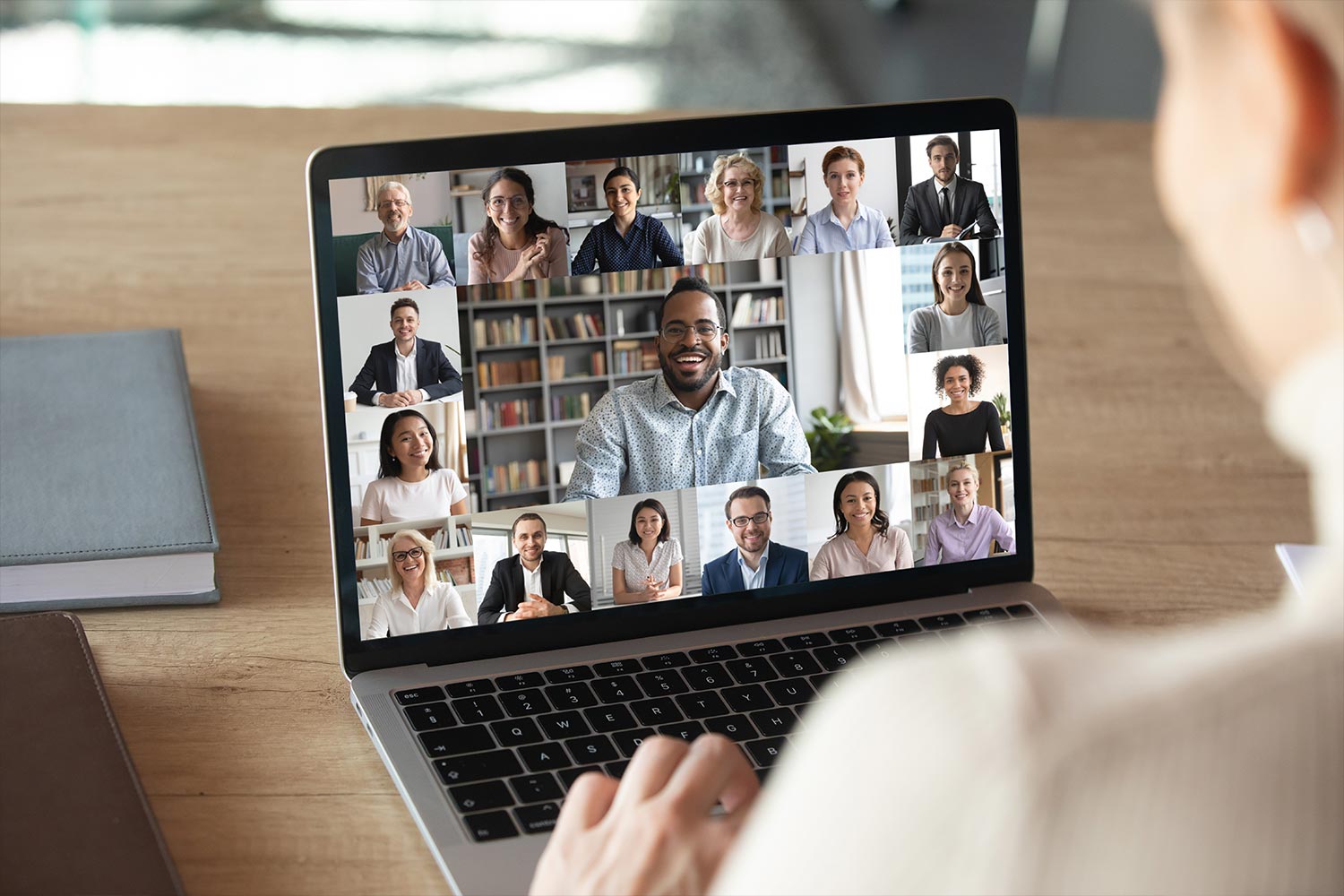Make the Move! Tips for Migrating Your In-Person Event Online
Suddenly finding you need to transition to virtual events? Learn practical tips, resources, and best practices to make your event a success.

It has been an unprecedented few weeks. The impact of Covid-19 has taken many of us by surprise—with a serious ripple effect for nonprofits with plans for in-person conferences and trainings.
As you contemplate the scary scenario of transitioning quickly to an online venue, you may be experiencing your own version of Nightmare on Elm Street (for those who miss the reference, the victims are all desperate to wake up).
But it doesn’t have to be that way. The fact is, many nonprofits have migrated their fundraising events, courses, conferences and other convenings online with great success! For instance, last month Fair Trade transitioned its in-person Fair Trade Campaigns National Conference to an online format—with a 35% increase in attendance. As a side benefit, the organization now has a bank of great content and resources ready to repurpose for future use.
Doubters will push back: “But how effective is online learning, really? Isn’t it better to postpone than produce an inferior learning experience?” Well, the academic world’s long-running debate about the efficacy of online learning has ended. The jury is back with a clear verdict: online learning is as effective as face-to-face, especially for adult learners, because it addresses more learning styles.
Change is never easy, but moving your event online doesn’t have to be a nightmare. Below are best practices, resources, and useful tricks for making your transition an easy and rewarding process.
Understand the Tech Options
Those of us early to the virtual training space learned a lot through trial and error. The tech wasn’t great and broadband couldn’t keep up. Hosting even a basic webinar made your heart race. Today is a different day. Nonprofits can access so many reliable and reasonably priced tools. Whether your aim is an interactive session with a small group or wowing your stakeholders with a complex virtual conference, there is a tech solution for you.
Great Resource: Tech Soup offers many technologies at a discount to nonprofits, including meeting platforms like GoToMeeting.
Quick Tip: Be sure to record your sessions. This allows you to offer them on-demand to attendees; sell access to them later (hello, revenue!); use them to market your organization or events in the future.
Don’t Forget About Inclusivity
We all remember the day when we scanned the list of conference speakers and were disappointed by what was a homogenous group that didn’t look much like us. The same is true for virtual events. Be sure your speaker lineup is representative of the audience you are hoping to attract. In addition, don’t forget about accessibility. Be sure your tech solutions are ADA compliant and follow the Web Content Accessibility Guidelines.
Great Resources: Here is an article by Harvard Business Review with tangible steps on how you can ensure your speaker lineup is diverse.
Quick Tip: Find friends or partners willing to test your tech to ensure it works for individuals who are visually challenged or hearing impaired. Even if the tech is “ADA compliant,” it might not work with all assistive technologies – so it is best to test it yourself.
Content Reigns
Your content has to be fresh, relevant, and built with your audience in mind. Now is not the time to reuse dated materials that may or may not fit with your learning objectives or the audience. Be sure to keep videos short and dynamic (attention spans are shorter online). Have your speakers use a conversational tone. At the Nonprofit Leadership Alliance, we tell them to imagine they are speaking on the phone to a close friend.
Great Resource: Adults learn differently than children – and our content needs to reflect that. Here is a publication from the Pacer Center that explains what adult learners want from your learning event.
Quick Tip: Build your event backwards. I know that sounds odd, but it is a curriculum design trick academics use to ensure learning outcomes are met. You have to start with what you want your attendees to take away and then create content that will achieve those goals.
Create an Engaging Experience
This is truly the most difficult part of online learning. Face it, we have all been bored by an online training in the past. No one likes to be talked at for hours, right? You have to get creative and find ways to build in two-way interaction, group discussions, live demos, audience polls, and opportunities for your attendees to be the expert (where they post the content or serve as speakers).
Great Resource: Andy Goodman’s Why Bad Presentations Happen to Good Causes is a free e-book with many great tips.
Quick Tip: Formats with multiple speakers (town hall discussions, interviews, etc.) are much more interesting and engaging for the attendee. Instead of having your keynote speak for 30 minutes (or an hour!), try doing an interview style where the board chair or president asks questions.
Rethink your Marketing Strategy
If you are trying to attract an external audience, you will need to create a digital marketing strategy that will not just create awareness but also generate leads. If your event is only open to an internal audience (such as volunteers), you will still need to find ways to “sell” your event (even if it is free!). Remember that free events still cost the participants plenty in terms of their time. You will want to highlight not just the features (great speakers, easy access), but also the change resulting from their participation. Will participants become more culturally competent? Will they become a master fundraiser? Will they make new connections? The value proposition must be clear.
Great Resource: This Forbes article explains how to create an effective value proposition.
Quick Tip: Registrations spike 2-3 weeks before an event. Ramp up your advertising and promotions around this time.
Regardless of what is happening in the world, online learning is a powerful tool that can help you stretch your talent development and constituent engagement budgets. And remember, you don’t have to do this alone. There are organizations out there who can help you plan, market, and host your virtual event, and turn your nightmare into a sweet dream. Who knows, you might just discover that this new strategy is one you should have been employing all along.
About the Author
Susan Tomlinson Schmidt, CNP, is the president of the Nonprofit Leadership Alliance, a social impact organization strengthening the social sector through the development of a talented and prepared workforce. The Alliance’s flagship program, Leaderosity, is an online training platform that is redefining how the nonprofit sector approaches talent development. Learn more at Leaderosity.org
Articles on Blue Avocado do not provide legal representation or legal advice and should not be used as a substitute for advice or legal counsel. Blue Avocado provides space for the nonprofit sector to express new ideas. Views represented in Blue Avocado do not necessarily express the opinion of the publication or its publisher.











